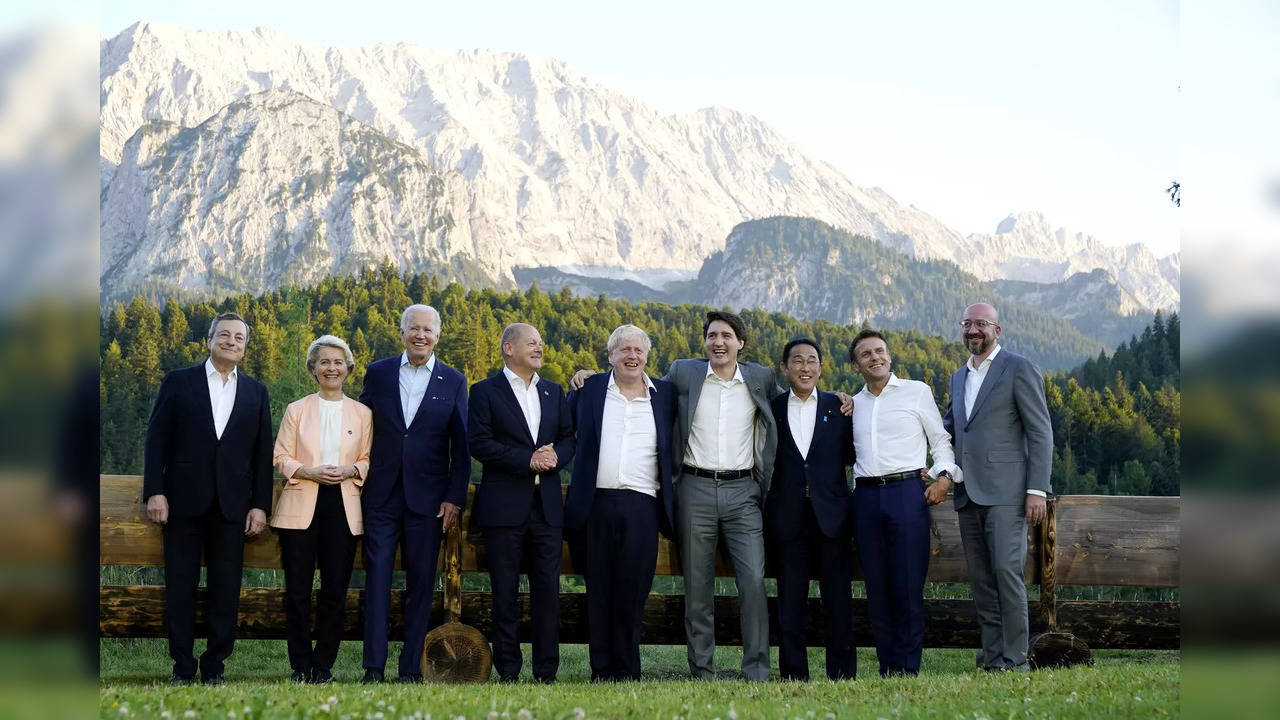Countering China: G7 in Action
G7 leaders develop action plan against China's Belt & Road plan, come up with detailed plans to mobilise $600 bn in funding. Funds to be raised to launch infra projects in middle and low-income nations. Will likely be used to counter China's Belt and Road Initiative.

Countering China: G7 in Action
Photo : AP
KEY HIGHLIGHTS
- The money will be used to finance infrastructure projects in poor and developing nations.
- The project named Partnership for Global Infrastructure & Investment was unveiled last year at the G7 meet.
- China's Belt and Road project is much older, and much better funded. It's a multi-trillion-dollar brainchild of Chinese President Xi Jinping.
New Delhi: With Prime Minister Narendra Modi's trip to Munich, Germany to attend the G7 Summit at the invitation of German Chancellor Olaf Scholz, the issue of China's growing influence in the Indo-Pacific was bound to be raised. One of the big focus areas for the Group of seven nations has been the ever-growing influence of China.
The group of seven leaders pledged to raise a massive $600 billion in public and private funds over the next 5 years. Without naming China or the Belt and Road project, U.S President Joe Biden said the initiative will show nations the benefits of working with democracies. He said, "when democracies do all that we can offer, they will triumph over autocracies. We're offering better options for people around the world. It will allow countries to see the concrete benefits of partnering with democracies."
Of course, the subtleties were not missed. China too responded, with Zhao Liang, the Spokesperson of the Chinese Foreign Ministry saying, "We are opposed to pushing forward geopolitical calculations under the pretext of infrastructure construction or smearing the Belt and Road Initiative."
The money will be used to finance infrastructure projects in poor and developing nations. It will likely be a counter to China's Belt and Road Project.
The project named Partnership for Global Infrastructure & Investment was unveiled last year at the G7 meet. It will focus on climate change, global health, gender equity and digital infrastructure.
The big question that arises from this is, how useful can fund like this be, that too, so late in the game?
We caught up with Manoj Joshi, a Senior Fellow at the Observer Research Foundation(ORF) to understand what's the key difference between the two. He says, "Let this plan unroll, because there have been many promises. What this plan says is they are putting out money and they are hoping to trigger private investment. A lot of it depends on leveraging investments. The big difference is that we are already seeing what the Chinese are doing on the ground, whereas this is a promise."
China's Belt and Road project is much older, and much better funded. It's a multi-trillion-dollar brainchild of Chinese President Xi Jinping. The project is spreading its tentacles across Asia, Europe and Africa. With over 130 signatories, it is an economic behemoth that won't get displaced easily.
India has stood up to the initiative since its launch. Issues of China using the project as a debt trap for partner nations and the concerns around national security have weighed heavily. The fact is, Indo-China relations haven't been business as usual since the border skirmish at Doklam. This step may be one step in the right direction to bring back the balance of power not just in the Indo-Pacific, but the entire Asia.
Trending:
End of Article
Subscribe to our daily Newsletter!
Related News





It's A Royal First! Amid Cancer Battle, Kate Middleton Gets 'Special' Honour From King Charles

AI Can Predict Your Political Inclination, New Study Reveals

US Clears USD 95 Billion Aid Package For Ukraine, Israel | What's In For Gaza

Who Is Dominic James Burris? 18-Yr Old Suspect Charged In Minneapolis Nudieland Mass Shooting

Tucker Carlson Calls Darwin's Theory Of Evolution 'Fake', Elon Musk Intervenes








